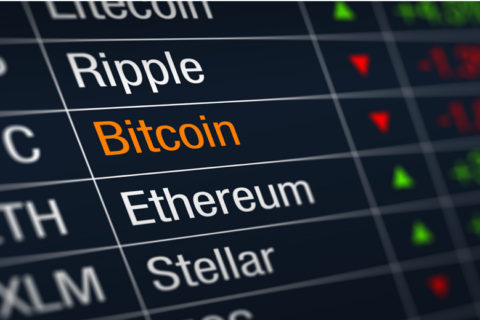Bad habits can cause a great deal of harm. And there are instances when we aren’t even aware of them. We’ll show you how to develop healthy Windows habits that will save you time and headaches.
Habits. We’ve all got them. But are they beneficial or harmful?
Whether you use windows for work or leisure, whether you play slots or edit in photoshop good habits can improve your overall Windows experience.
Do you have a habit of not saving your data in several locations or deleting all of your old files? What about those update notifications? Do you have a habit of dismissing them?
Good habits may appear to be self-evident, but when it comes down to it, we often choose not to follow them. Most of the time, it’s not because we don’t care; rather, we believe it’s too much labor or that we don’t comprehend the task’s relevance.
I’ve outlined the basic habits you’ll need to get the most out of your Windows experience. With Windows 10 on the horizon, now is a wonderful opportunity to start making new ones and brush up on subjects you may have forgotten about.
Update, Update, Update
Windows Update
First and first, let’s address the most fundamental of habits. We’re all guilty of failing to keep up with the times. Updates, whether they’re Windows updates, driver updates, or software updates, may be a pain.
You could be confronted with a variety of situations. One possibility is that you are utterly unaware of the need for or how to upgrade. Another possibility is that you are unaware that updates are available and that they require your assistance to finish. Finally, you are apathetic and unconcerned because your computer has been “just fine” without them so far.
This last circumstance is frequently brought on by a failed update that you have been unable to resolve. This is the most aggravating since you want to fix the problem but can’t. However, there are a number of things you can do to make Windows Update less obnoxious.
We won’t go into great detail here because we’ve already covered a lot of ground (see our article on everything you need to know about Windows Update).
If you’re not sure how your computer is updated, search for “Windows Update” and open it to see if any new important or optional updates are available. Whether you’re not sure whether or not you should install an update, make a quick search online to discover if there are any risks associated with doing so.
You won’t have much control over Windows Update in Windows 10, and updates will not be optional. On the plus side, this ensures that your system is always up to date.
Driver Update
Although updating drivers isn’t something you should do every day, it is something you should be aware of. We just published a guide on how to detect and replace obsolete Windows drivers. It explains how to use your computer’s utilities as well as third-party applications to verify that you have the latest up-to-date drivers.
Software Update
Another major issue that sometimes goes unreported is software upgrades, particularly third-party software. Some applications will automatically alert you or at the very least have a capability to check for new updates, but you must still be aware and vigilant when updating them. Other software leaves it up to you to look for a recent update online. However, manually upgrading so many programs can be quite consuming.
Ninite.com is a fantastic alternative. It is mostly used as a mass software installation website, but it can also be used to update software that is already installed. Simply check the boxes next to the apps you’re aware of and start the setup. If any of those programs are out of date, the most recent software version will replace the previous one.
FileHippo.com’s App Manager, which analyzes your computer for any outdated software, is the way I most frequently use. FileHippo has a large database of both free and paid third-party software that should cover the majority of the products you have installed.
Using a conditional tool like IFTTT, a note app like Google Keep, the Windows Task Scheduler, or a task management system to set reminders to check for updates can also help. Finally, Secunia PSI is a free option that we have previously suggested.
Set Up Automatic Backups
Backing up is something we hear a lot about. But has it grown so commonplace that we are oblivious to it? Is it on portable hard drives or in the cloud? Do you have numerous backups of everything or just one?
As someone who is guilty of not consistently backing up or deferring tasks, I pose these questions. It’s easy to believe you’re an exception, but when was the last time you backed up all of your essential documents, videos, photos, and other data?
Setting up automatic backups, both to the cloud and to an external hard drive, is the key to ensuring this happens on a regular basis. Windows has made efforts in making backups easier and faster with features like automated File History in Windows 8, which is analogous to Apple’s Time Machine.
Furthermore, OneDrive is a fantastic tool, and we’ve discussed how to tweak and improve it in Windows 8.1.
You don’t need third-party software to back up your files because Windows comes with a number of free file sync and backup options. If you do wish to use non-Microsoft tools, we recommend some of the free and premium programs in our guide to the 6 safest ways to backup and restore files in Windows 7 and 8.
Watch What You Download
This isn’t just an advice for Windows users. This is true regardless of the operating system you use. On the Internet today, paid software does not always imply good software. And just because a free application is recommended doesn’t guarantee it’s devoid of bloatware–we’ll get to that in a minute. Before downloading any program, make sure to perform your own research on it.
It is critical to obtain software from a reputable supplier. MakeUseOf provides a vast collection of tried and true software that we suggest. The aforementioned FileHippo.com and Ninite.com are both fantastic sources to download from.
Furthermore, be wary of email attachments, advertisements, pop-ups, and other potentially dangerous sources of infected files.



